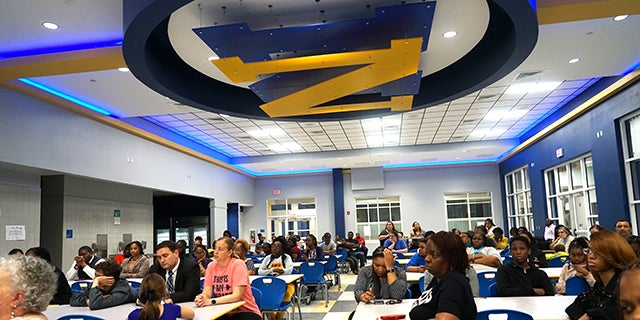Declining teacher, student population behind NASD reorganization
Published 11:05 am Monday, April 15, 2024

- Stakeholders gather for "My Voice, My NASD Community Conversations" last week. (Sabrina Robertson | The Natchez Democrat)
|
Getting your Trinity Audio player ready...
|
NATCHEZ — A Natchez Adams School District survey available now is asking stakeholders their thoughts on the reorganization plan for pre-kindergarten through eighth grade, made necessary by a declining population of teachers and students.
Click here to start the survey
The reorganization would create grade-based campuses, grouping students by age rather than operating multiple multi-grade elementary schools.
While this would create some logistical challenges for getting children to school in households with multiple-aged children, the alternative is not having certified teachers at some campuses, Interim Superintendent Zandra McDonald-Green told attendees of a stakeholder meeting on Tuesday evening.
The meeting at Natchez High School called “My Voice, My NASD Community Conversations,” informed people of this and other challenges this district is currently facing.
With the current structure, there were 19 unfilled teaching positions at the elementary level. Meanwhile, hiring efforts are not going well. There are a dozen teacher applicants for next school year and only one who was certified, Green said.
“This kept me up at night,” Green said of the lack of teachers. “As a district, we have to fill 19 positions by August and we have one certified applicant. No one wants their child to show up in August to go through the school year without a certified teacher to teach them.”
The issue did not happen overnight. As teachers have retired or moved to another district, NASD was not able to replace them, Green said, adding “It’s a national crisis.”
Meanwhile, the number of students in classrooms over the years has steadily been shrinking from 3,460 students during the 2016-2017 school year to 2,711 students enrolled for the 2024-2025 school year.
Data from the Mississippi Department of Education from the 2022-2023 school year shows there are enough teachers throughout the district to staff classrooms at a 12 to 1 student-teacher ratio.
Green and her staff came up with a restructuring plan that relocates students of the same grade level to the same school instead of running community-based schools.
The tentative proposal, which must be voted on by the school board, would make Susie B West Elementary a pre-kindergarten through first-grade school; Gilmer McLaurin Elementary a second- through fourth-grade school; Morgantown Elementary a fifth- and sixth-grade school; and Natchez Middle School a seventh and eighth-grade school.
“If we staffed classrooms at a 20 to 1 student teacher ratio, that meant we didn’t need 19 teachers. We only needed eight,” Green said. “Our numbers are small. We cannot continue to operate as a district with 2,800 students as we did when we had 6,000 students. When I started in the district many years ago, my roster was 25 to 27 students per class.”
In addition to maximizing resources, Green said the reorganization also addresses behavioral challenges the district has had at the middle school level.
Sixth grade students had been placed in the same school as eighth grade students of a higher maturity level. At the same time, these students at the combined middle school grew up in different communities, Green said.
“Our middle school is a perfect storm,” she said. “With neighborhood schools, I start out with the same group of friends in kindergarten. … Then in sixth grade, what did we do? We combined them. The same issues that we have in our larger community, we have in our schools. With this structure, they start to matriculate in kindergarten so some of the issues we see as they get older should decrease.”
With any changes or restructuring of the district, Green said NASD wants stakeholder input.
“We are committed to having open communication with our stakeholders. We want to have feedback from our stakeholders when making decisions regarding district operations and structures because at the end of the day … the schools belong to all of us. That’s why we wanted to have these community conversations.”






